OPGELET: De NL versie van dit interview vind je op deze pagina.
For years, it was a familiar refrain: First three days of full-on Roadburn Festival and then cooling down on Sunday in two 013-halls with the Afterburner. In recent years, the range of bands and activities expanded, so in the now we can consider the Roadburn Sunday as a fully grown festival day. And guess what: the name Afterburner has been discarded since a couple of years already. A conscious choice, says organiser Walter Hoeijmakers. “The Sunday isn’t called Afterburner anymore since we started to book bigger bands, and this year we even involve Het Patronaat for a first time.”
Mr. Roadburn realises how the festival has digested the expansion of the 013, as of 2017 they’ve sold a lot more 4-day than 3-day tickets. All weekend tickets are sold out and only day tickets for Thursday and Sunday are still for sale. This isn’t a prelude to further growth if Hoeijmakers can help it. Speaking of artistic content however, the festival director aspires a growth towards an even more in-depth festival. NMTH went to the city of Utrecht and over some fresh mint tea and elderberry juice participated in a conversation about that Sunday, competition, dream headliners, inspiration from Le Guess Who?, the loss of Incubate, the role of the curator and other pressing Roadburn issues. The disillusioning reality is a festival of this size can’t afford TOOL, but apart from that it seems that there are range of possibilities. “I’ve become more free and I’ve gotten the idea that Roadburn 2017 really is an artistic statement.”
By Ingmar Griffioen
Walter Hoeijmakers is a humble, gentle inhabitant of Utrecht, but also the man who gets a fire in his eyes and talks enthusiastically about music and his festival (organised in collaboration with the 013 venue) in Tilburg. A festival that is on to its 22nd edition this year. Nowadays it’s an indissoluble part of the Dutch – but also the European and international – heavy and avant-garde landscape. The position of the festival has gradually been growing by sticking to their own artistic vision within a huge international network that steadily built from the early days of the Roadburn blog. For more references, see the Noisey/Vice documentary Mr. Roadburn.
At the same time, it isn’t a position to take for granted, certainly not when there are copycat festivals popping up. According to the festival director, the most important challenge for Roadburn lies in the positioning of artistic content. His answer is a continuous renewal and deepening of the festival, where he chooses to dive into even more quirky paths. In all fairness, who expected the experimental hip-hop of Dälek, the electronics of The Bug (vs. Dylan Carlson from Earth) or the so-called ‘hipster black metal’ of Deafheaven on Roadburn? “Repetition is stagnation”, preaches Hoeijmakers. “I want to stay ahead with Roadburn, to boost this partially saturated landscape, wake people up and be a stepping stone for the headliners of the future.”
Was it an obvious choice to lay off the Afterburner name or has it grown this way?
“Actually, I always liked the Afterburner name, but it indicated some sort of smaller version of Roadburn. A laid back day for people that don’t want go home and immerse in ‘Planet Roadburn’ for just one more day. In 2015, we were offered a couple of big bands for that specific day. Especially that Anathema show with the retrospect on their career, you can’t call that an Afterburner anymore; I had the feeling that we would short-change a couple of bands and the festival itself, both musically and artistically. So, we decided to just turn it into the fourth day of Roadburn, which is more pleasant towards the bigger bands as well. You cannot host bands like Ulver, and also David Tibet & Youth (Hypnopazuzu), and call it the Afterburner. These bands deserve more.”
And now a lot more 4-day tickets are being sold?
“There are 3.5 times as many 4-day tickets sold than 3-day tickets. When we still had it as the Afterburner we sold more 3-day tickets in comparison. The past two years it has completely turned around. Because we made an almost full festival day out of the Roadburn Sunday, this development is reflected in the sales of the weekend tickets – more people want to go for four days of festival. It is very weird to see such a remarkable difference. Roadburn is really starting to become a… yes, a holiday. People want to experience and be there for the four, full days. This also has to do with the fact that we have a strong programme on the Main Stage on Sunday, with three big names.”
Dive into Roadburn 2017 with this 013 Playlist with no less than 178 songs:
For bands like Hypnopazuzu and Ulver?
“Yes, and we noticed that there’s a lot of interest in specifically the whole Patronaat programme. With Oxbow, Sumac (with Aaron Turner of Isis), Leif Edling with his new project The Doomsday Kingdom, Come to Grief, Gong and Inter Arma; that’s almost an extra Roadburn Main Stage that people get on Sunday. We used to have just the Main Stage and the Green Room, and the last couple of years Cul de Sac as well. But with this solid programme at Het Patronaat, it has become a full festival day. These bands would normally perform on the Main Stage, and we hold our breath for the turn-out… however they requested not to perform there. Sumac specifically wanted to play at Het Patronaat. That venue has gotten a sort of legendary status on Roadburn, like the MIDI Theatre used to have. I had to tell many big bands that Het Patronaat really isn’t possible for them.”
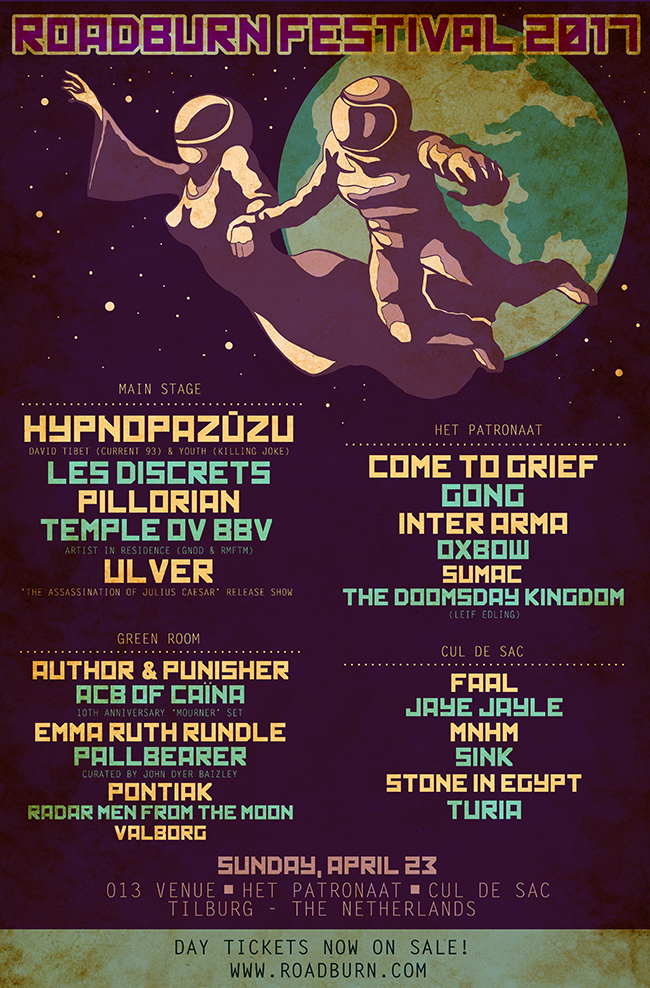 With a capacity for 700 people it’s too small?
With a capacity for 700 people it’s too small?
“Too small indeed. Very strange, that a couple of headliners requested to play there. I get a lot of questions from bookers and managers about that venue, and think that Het Patronaat almost has a ‘cult vibe’: ‘you have to play there at Roadburn’. It’s nice, but also quite strange, that something within Roadburn gets such a cult vibe. I think it’s a compliment. But the really big guys who are preparing for a big show belong on the main stage, and they are totally convinced the moment they get the technical specs of the 013 Main Stage in their mailbox.”
What does that growth to four full days do with the festival? In what way, do you have to programme differently?
“It can be difficult, because you have to distribute the really big bands across the four days in a good flow. For example, the Saturday leans really on Oranssi Pazuzu, Warning, Memoriam, My Dying Bride and Mysticum, it’s based on the heavier side of doom, also with some black metal influences. From the founders from the 90s ‘till the current generation of Oranssi Pazuzu. While the Sunday with Ulver, Hypnopazuzu, Temple Ov BBV (the collaboration between Radar Men From The Moon from Eindhoven and the artist in residence GNOD) and Les Discrets on the Main Stage offers the more experimental side with shoegaze and dark psychedelics. Plus, an evidently more melancholic and atmospheric approach. This is done to build up the festival until Saturday and then the Sunday is a day on which your tired body doesn’t get beaten up any more. In this way, you can delve into the laidback Roadburn flow one more time.”
Still a little bit of the Afterburner-feeling, with perhaps the difference that in the past more bands played a second show on Sunday.
“We used the Sunday a lot for second performances. We also had some heavier things, such as Ihsahn, Triptykon, Bongripper and Yob. This year I’ve decided to show the more atmospheric side, with a nod to the more present doom of Pallbearer and a final highlight the black metal-side of Pillorian, with John Haugm of Agalloch. We’re going out with a bang, but there’s a large portion in which you can let yourself drift away. On the other hand, Het Patronaat stays a full-on old fashioned Roadburn stage – for the die-hards who want to go all out on the fourth day as well.
“The days are truly build up in a way. I got started when I had a clear vision of what John Baizley wanted. This is always the case with Roadburn: the moment I sit down with the curator and hear his ideas, I’ll go and shape the days around it, so it becomes a whole.”
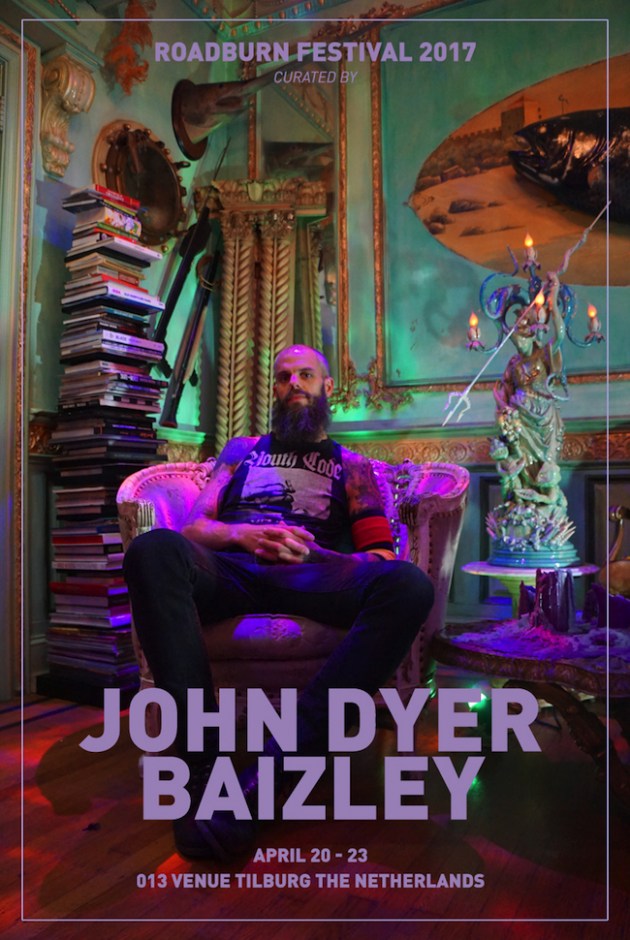 Is it a certainty that the curator programmes a part of the Saturday?
Is it a certainty that the curator programmes a part of the Saturday?
“At first the curator programmed an entire day and took care of the 013’s Main Stage, Green Room and Bat Cave/Stage01. In 2015, when Ivar from Enslaved and Einar from Wardruna were the curators, I noticed they had a really thematic Main Stage. That went from Virus to Sólstafir, Fields of the Nephilim, Wardruna and Enslaved and that built up beautifully to that huge apotheosis with Skuggsjá. I noticed what happened with the atmosphere that day at the Main Stage. People stayed there for almost all day, because they wanted to get sucked into the vibe. At the same time, you didn’t have the same feeling at the Green Room and Stage01. You were watching great bands, but it wasn’t a whole. That opened my eyes and so I’ve decided that curators don’t get a full day anymore, but instead they programme a stage on two separate days. Now the curator does the Main Stage on Friday and Het Patronaat on Saturday. Lee Dorrian did it this way last year and in doing so laid down a unique vision on the festival, where the vibe stayed within four walls.”
That way the curator can place his mark on the festival.
“It gets more interesting when a curator is challenged to not just put bands on stage, but to also tell a story. A story within that stage, within that day. Ivar and Einar told ‘that story’ very well. Lee Dorrian did too. And I think that this year, John Baizley does too.”
Did you explain to John Baizley how they told the story in 2015?
“I always give the curator a free hand. I only explain what the possibilities are, what previous curators did and that they can use the podium to at least tell a good story. This is possible now because there is no distraction from other stages. Otherwise a curator is competing against himself on an artistic level.”
Did you ever have to tell a curator to slow down? Can a Roadburn curator go too far?
“No. However I once told a curator: ‘This is not going to happen, because it does not fit with Roadburn.’ I try to tell them to go with their own views of what Roadburn festival is and can be. And in that I have never experienced any extremes, only some things that did not fit into the budget. That a curator has awesome plans for bands and collaborations, but we are set back by financial limitations. The kind of ideas that will work on Coachella, or Lowlands, or any other festival with budgets that are five times as big as ours. An idea like having TOOL at Roadburn for example is way too expensive. But that’s a beautiful thing as well: to look at each other with tears in our eyes and conclude that some things are simply impossible. It also happens that curators have connections in relatively new genres and that we get no-go’s from managers and booking agencies that have never heard of Roadburn. That is how over the last few years a lot of amazing ideas did not come to fruition.”
Like Pinkpop director Jan Smeets, do you have a list of ultimate acts that you dream of having at Roadburn?
“No… yes, but they are unrealistic. They concern older bands such as a special set of Golden Earring, ZZ Top…”
The expansion of 013 made room for an extra 1000 visitors. That must have led to a growth of budget, right?
“That has indeed made certain things possible, like Diamanda Galás last year. This year we put a stronger focus on the heavy side of the Main Stage. We have quite some big names playing the stage that can handle the extra capacity of 013 and keep the visitors interested. Last year I mentioned that all these changes actually amount to a fresh start for Roadburn. Now I feel like Roadburn 2017 is an artistic statement.
“I have become more confident with putting more cutting-edge acts on the bill. Roadburn has to be that festival where one can see into the future. It must not fall back on the big names who formed and dominated the scene in the past. The festival has to be the springboard for the next generation of bands, musicians, poster artists, you name it. This is something I looked for this year, to also book the more exciting things that are happening just outside of the scene.”
I got to know Roadburn as THE stoner festival. For me, the recording of Brant Bjork was like the ultimate embodiment of what Roadburn was. Nowadays, the festival covers a lot more than just the stoner rock genre. Do you set out to surprise visitors? To force them out of their comfort zone with for example Dälek or The Bug vs. Dylan Carlson?
“Yes, that is very important. I feel like part of the scene is stagnating at this point. And that is because too many bands sound the same (or want to sound the same) and a lot of festivals copy each other. Too many bands have been doing the same thing for a long time. With Roadburn I want to break through that hegemony. Because in a few years from now we might be done with the current headliners, artists grow older and start to repeat themselves. That is why Roadburn must be that stepping stone for bands – and headliners – of the future. At least, that is what I would like it to be…”
In terms of music, Roadburn is broadening. Take Dälek for example, which in fact is a kind of very experimental hip-hop.
“Harry Sword of The Quietus wrote a beautiful piece on Roadburn, in which he said that Roadburn “consistently challenged the very notion of what “heavy” actually means,’ by which he means that ‘heavy’ can be Neurosis or Dälek or Zeal & Ardor or Peturbator or Esben and the Witch. He observed that there are many forms of heavy music, from Sunn O))) to acoustic songwriters and what Roadburn is doing now is collecting them under one umbrella. For the first time I read on paper exactly what I was doing but could never quite put into words. That article meant a lot to me, it is nice to read that for once.”
Out now: The Bug vs Earth – ‘Concrete Desert’
It feels like a confirmation of being on the right track?
“He described my gut feeling very well. I am an emotional person, I am driven by my feelings. On the one hand this is one of my strengths, but it can also get in my way. When I get stuck in my feelings, I can’t think freely anymore. Then I cannot get things done because I’m stuck. Since I read that review, I improved at not losing myself too quickly in what I want. What I do already felt good to me, but I could not describe it. That little piece of text strengthened me, with that in mind, I can think more freely, be daring and concentrate on Roadburn. I now have a clearer vision of where the festival should go, also thanks to the incredible support of 013.”
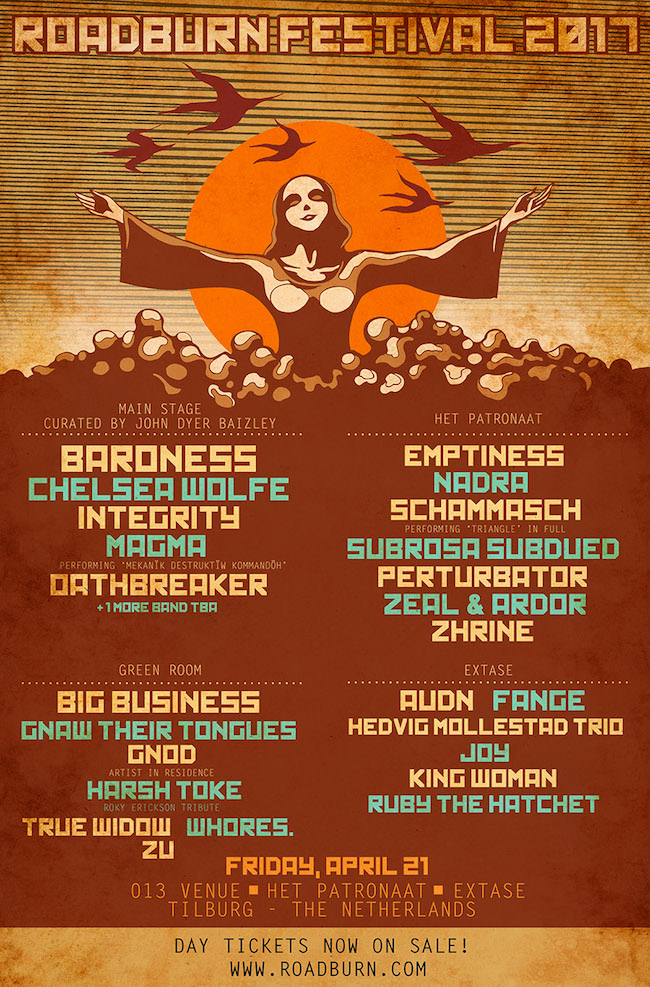 Last year Scott Kelly suggested that Roadburn should not grow any bigger. Is it thinkable that the festival grows in any aspect? There is enough attention…
Last year Scott Kelly suggested that Roadburn should not grow any bigger. Is it thinkable that the festival grows in any aspect? There is enough attention…
“I find that very difficult. I think the festival will grow mostly in an artistic way. We are looking at ways to give the festival more artistic depth in the future.”
Artistic depth, is that also the biggest challenge?
“Yes it is. How can we lead the way with Roadburn, with big acts, headliners, special projects, you name it. How can we elaborate on that cutting edge feeling that Roadburn has. With surprises, interesting views on what happens in the underground and capturing or even creating that. ‘Roadburn as the driving force’ is the most important feeling, we want to lead the way for the entire underground scene.”
A festival needs to renew itself or does it sell its tickets anyway?
“Indeed we need to constantly renew. There are so many other festivals around the same dates, hoping to attract the same audience as us. Some of these festivals essentially copy and paste parts of our line up, just because the bands are on tour. It’s difficult to be at the forefront of booking those bands, and we don’t take our ticket sales for granted – we know we have to innovate to hold people’s attention. We’re all fishing in the same pond, and that cannot go on forever.”
Festival visitors will be ‘saturated’ as well?
“Yes, and also the bands. Jurgen and I created a blueprint that has been copied unthinkingly. Some turn it in to something beautiful, but now you even see copycats of the people that were heavily inspired by us. For example, the first Desertfest-clones have already emerged. This leads to a repeated pattern of festivals with the same headliners and co-headliners throughout the year. I’m afraid that will lead to saturation, and eventually things will implode.
“First it was Europe-centered, but now America has Psycho Las Vegas and – a new festival – Days of Darkness. They also do something very similar to what we do, but they spend a lot of money doing it.”
Looking at it from the band’s point of view, both Dutch acts and European outfits such as My Sleeping Karma, isn’t this explosion a good thing? Are they not able to perform more often and build a better future?
“Of course this means great exposure for bands. I can understand that they are happy about that, but it keeps focusing on the same bands and I think that’s a shame. The lion’s share of festivals completely lack the drive for renewal, to be cutting edge and secure the future. These are mostly festivals run by people with booking agencies, providing space for their own roster. Or people playing in bands themselves. It’s a complex case. On the one hand I’m happy for bands that have more places to perform, but from an artistic point of view I dread the fact it’s just a repetition of the same moves. In the end I believe that repetition is stagnation.”
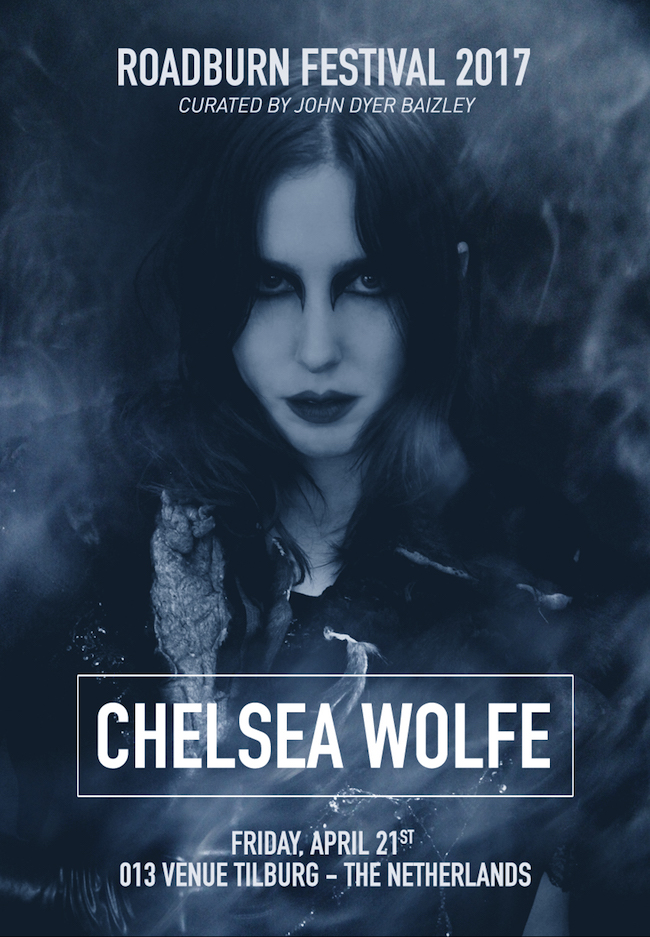 Is that a bad thing for Roadburn too?
Is that a bad thing for Roadburn too?
“Bad for Roadburn, but also for the scene and fresh talent. It’s nice for bands to have periods where they can present themselves, but I believe programming should be more cutting edge, more daring and from an artistic drive.”
There are other festivals with Roadburnesque inclinations. Le Guess Who? for example with Chelsea Wolfe and Goatsnake, and last year with a Consouling Sounds evening in dB’s.
“I find that inspiring, it’s exactly the artistic drive I meant. In the way Johan and Bob (programmers/bookers Johan Gijsen and Bob van Heur, IG) tell me they get inspiration from Roadburn, I get inspired by Le Guess Who?. Whenever I speak with them or walk around on their festival, I get triggered artistically to think about Roadburn. Inversely Roadburn does the same for them. This is where it get’s really interesting, because it brings both worlds together. In this artistic field of tension exciting new things can happen. I find that beautiful but it’s something I miss in a lot of Roadburn-inspired festivals. I see no tension but a safe hotchpotch of bands that have already proven themselves in the past. It’s nice for bands to play there, but I think the lack of innovation is dangerous for the future.
“You don’t see that happening at Le Guess Who?, they continue to deepen further. Not only in programming but also the setting in which they let the bands perform. I find that very inspiring to behold.”
Is the passing of Incubate damaging to Tilburg, the underground and even Roadburn in the long run?
“That’s a hard question to answer. In the first place I find it really painful for Incubate, especially for Vincent, Joost, Jelle and Erik; all the people that poured their heart and soul into putting Tilburg on the map as an exciting city where many things happen, musically but artistically too. I don’t know if Roadburn will suffer any consequences, I mainly think it’s a shame for bands, artists and the hundreds of volunteers who had a place where they could express themselves creatively and who proved as a group that art and cutting edge culture is not solely the domain of the Randstad (the four biggest cities of the Netherlands, IG). In fact, especially the more rural area’s bring art, music, theatre and all sorts of cross-contamination to the attention in a very liberal way. It is really sad that this ceases to exist. It is also worrying because we need it. The Netherlands need it.”
You have a curator. Do you book all other bands yourself?
“I do nearly all bookings myself. This year Brent Oostrum, who works at TivoliVredenburg, helped me with the Cul de Sac programme. Sometimes I ask Joep Smeets from 013 to help me, I talk to him a lot. With some very large acts that fall just out Roadburn’s regular scope it sometimes happens that we don’t communicate directly with the band, but with management or bookers with whom Joep has contact because of his network.”
It seems to me that you have to turn down a lot of bookers, managers and bands.
“Yes, I have to disappoint a lot of people. That is hard, but it’s also hard that the pressure keeps rising. The stakes are getting higher too. At least, the stakes for certain bands to play and be seen at Roadburn are getting so high now… That makes the process of booking very intense sometimes.”
Is it the same as Eurosonic, where bands time their releases to the festival, where it all has to happen for them?
“In the way that bands and labels focus on that time of year, yes. And then if I let it be known that I’m not interested in booking a particular band, communication hardens. They feel let down and I feel pushed into a corner, I find that difficult.”
What qualifications should bands meet to be able to play Roadburn?
“My main quest is to find bands that carry the sacred fire. Bands that make music in their own idiosyncratic ways within their genre. Those that genuinely try to innovate and add something new to it instead of just copying a certain style or sound. It needs a real urgency and drive to make it special. This has a lot to do with gut feeling too. With Zeal & Ardor you immediately hear that it’s something new and special. In those cases you have to go all out to get them to play Roadburn. That band embodies Roadburn, in a way. That’s what I’m looking for: does the feeling of a band match the festival? This boils down to gut feeling and the vibe that a band induces. Also the bands have to actually want to make a point.”
Is it an advantage for bands to hail from Belgium or The Netherlands?
“Not in the slightest. I’m thrilled to see so many great bands rise in The Netherlands and Belgium, really good and wayward acts. Where a part of Roadburn was historically dominated by Americans, I love the fact that there now are so many exciting things happening in Europe that we are no longer dependent on the big American bands. To me that is good progression. I love seeing a new generation of musicians in Europe, and in The Netherlands and Belgium too, that picked up on things, gave it their own spin and are completely on par with the English and the Americans. The status quo where artistic things had to come from the UK or America first is completely in the past when it comes to Roadburn.”
Dutch bands like DOOL and Death Alley really put themselves on the map at Roadburn, is that what you aim for?
“Yes, very much so, that is really important to me. For them to grasp Roadburn with both hands, work their asses off on stage and leave such a notable impression on the international community. I currently see a kind of ‘New wave of Dutch black metal’ rising with some very interesting bands such as Turia, Laster, Verwoed, Fluisteraars, Folteraar, Lubbert Das, Wederganger and the list goes on. Something’s brewing, it’s such a hotbed of creativity and musicality. That thing that Iceland and Finland have, The Netherlands now have it too.
“I also hope that the Dutch bands that made the cut are very aware of the fact that they can actually attract international attention. There are a lot of journalists and people from the industry present at the festival. The lion’s share of visitors are active people from the scene running blogs and investing in social media and their musical genre. It might just so happen that you put on a good show here and it gives you a push. Look at DOOL, they scored a record deal at Roadburn because of their showcase. It’s sometimes disappointing to see bands at Roadburn that just don’t get it. They don’t see that it’s more than just a show, that there is a lot to be gained.”
Why did you specifically select Laster as a Roadburn Introduces act within that ‘New wave of Dutch black metal’?
“In my opinion they have a gorgeous, idiosyncratic take on black metal. They incorporate the experiment, the avant-garde. It’s not just pure, raw black metal but the feeling is just so… the drive is the same as with the congregation around Oranssi Pazuzu and Dark Buddha Rising, something you also see in Norway and Iceland with Naðra, Svartidauði and Misþyrming. There is a kind of primal urgency in those people to work like this. You see the same with Laster, also with Turia and all those other bands; it’s not made up but something they actually have to get out. It comes from the very depths of their being. Which sounds very hippie-like, but with these people you really feel that they do it because they actually want to. It almost feels like they have a higher cause, it’s that urgent. I find it really special what is going on right now.”
Roadburn Festival takes place from Thursday the 20th until Sunday the 22th of April in all the halls of 013, plus Het Patronaat, Extase and Cul de Sac in Tilburg. NMTH will host the program in Cul de Sac on all four days. Time schedules can be found on this page. Ticket information through Ticketmaster: some day tickets are still available but only for Thursday and Sunday.
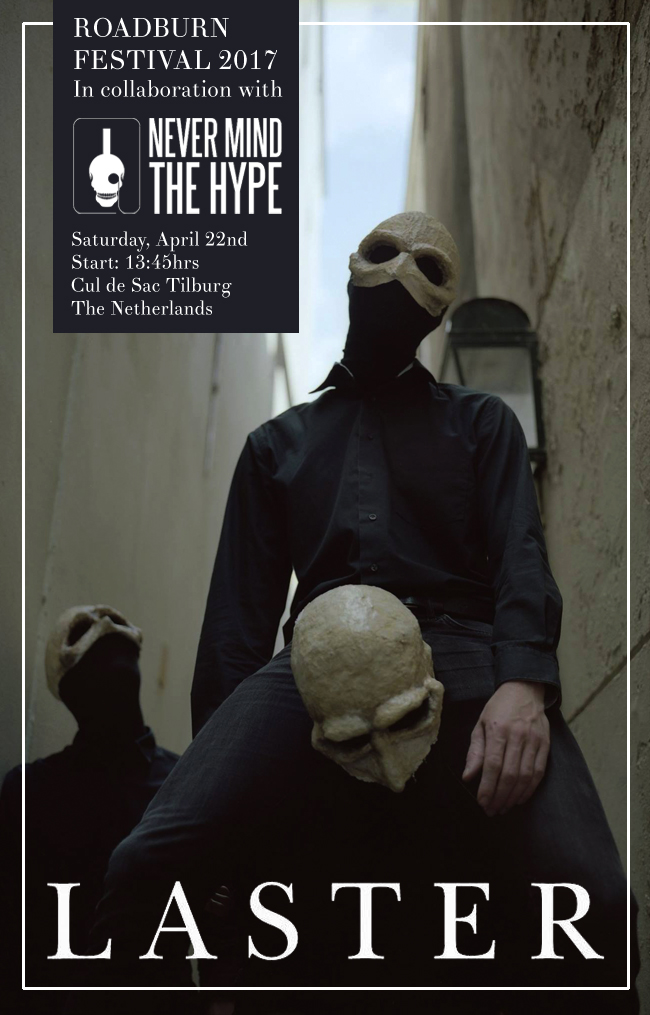
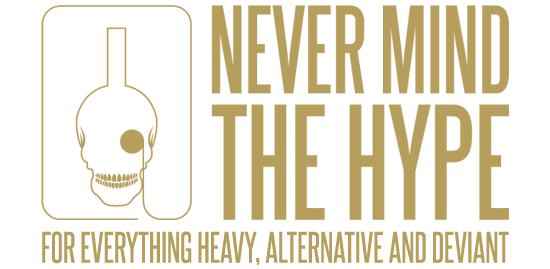
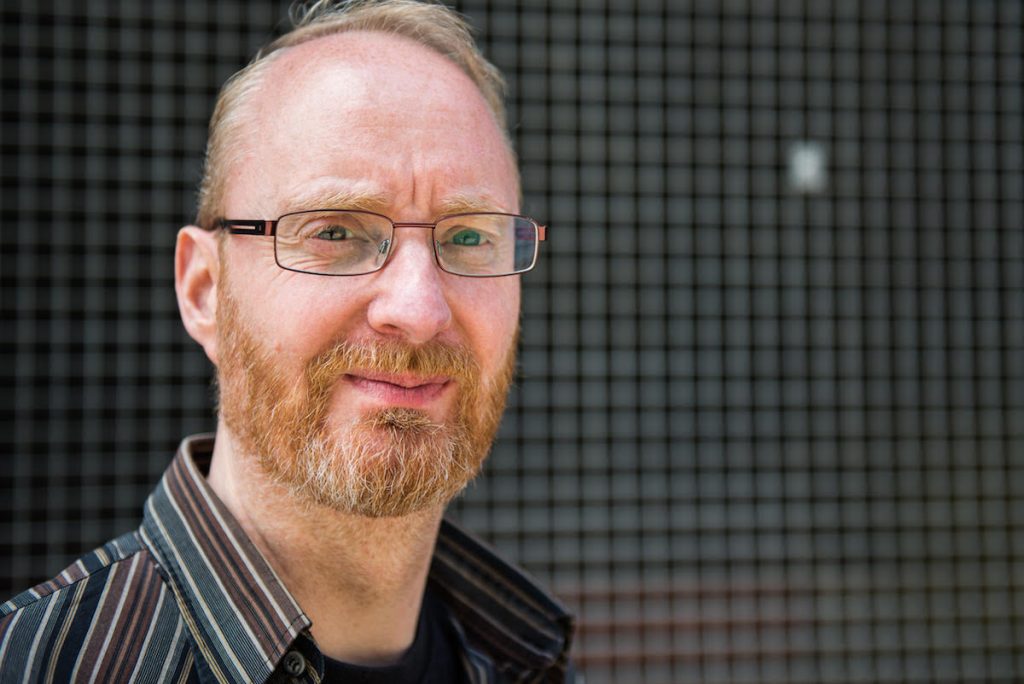
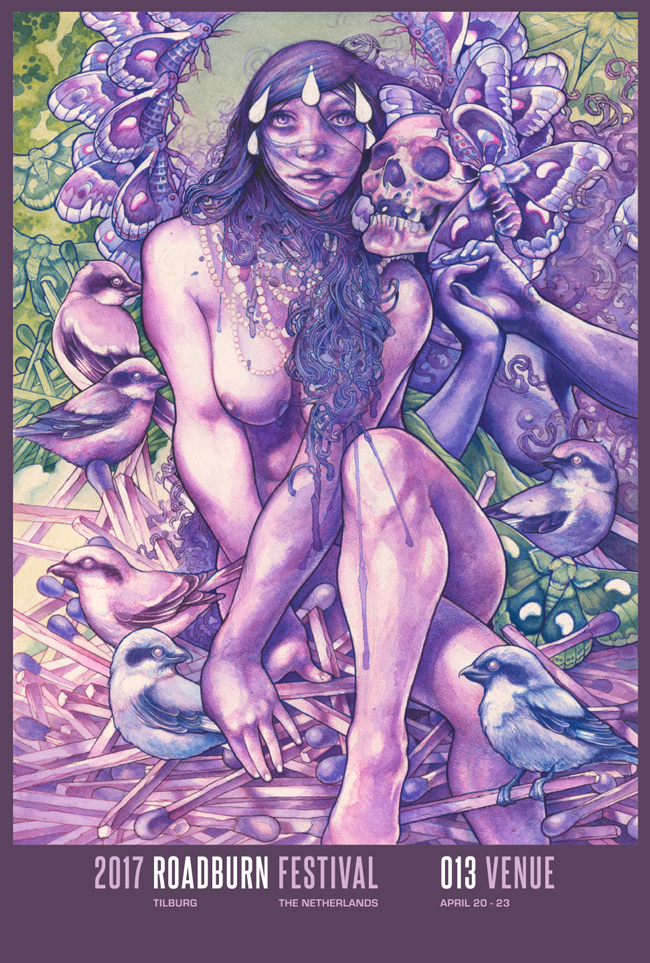
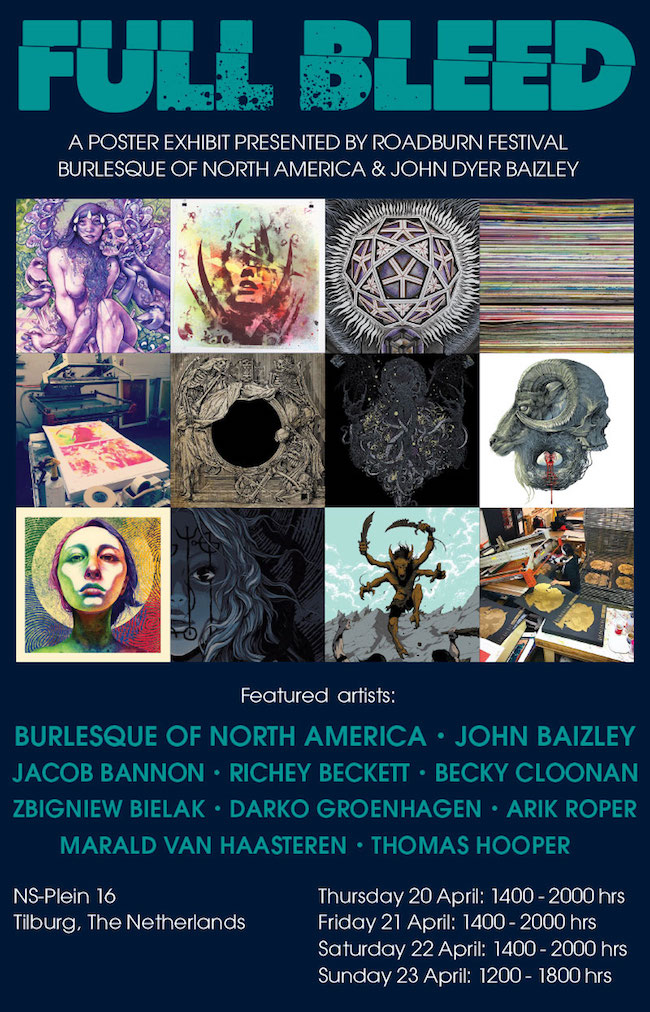
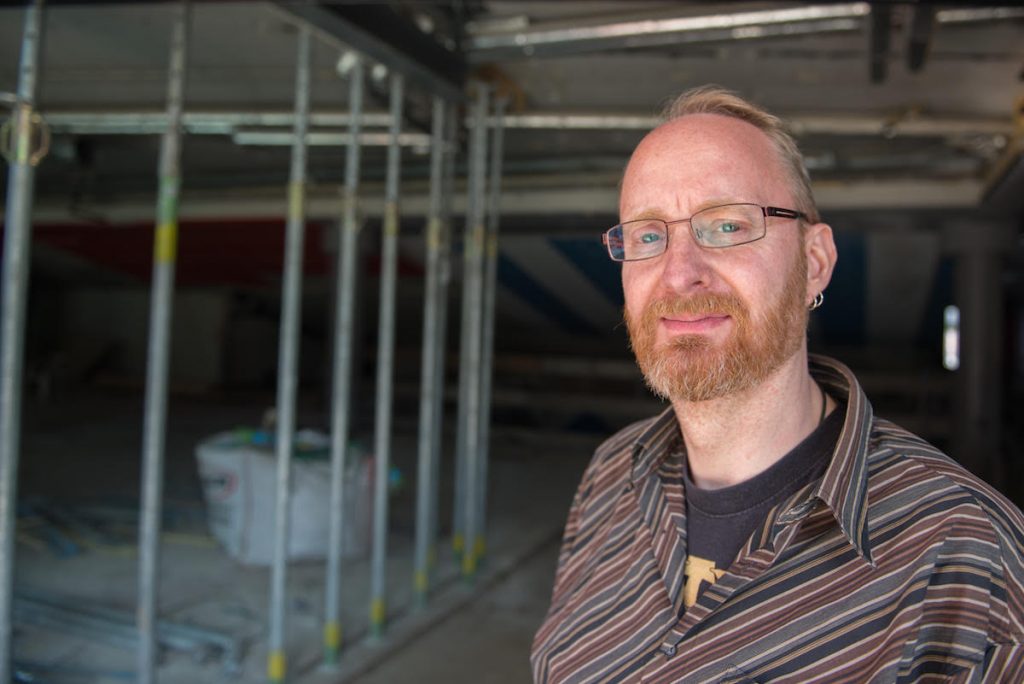
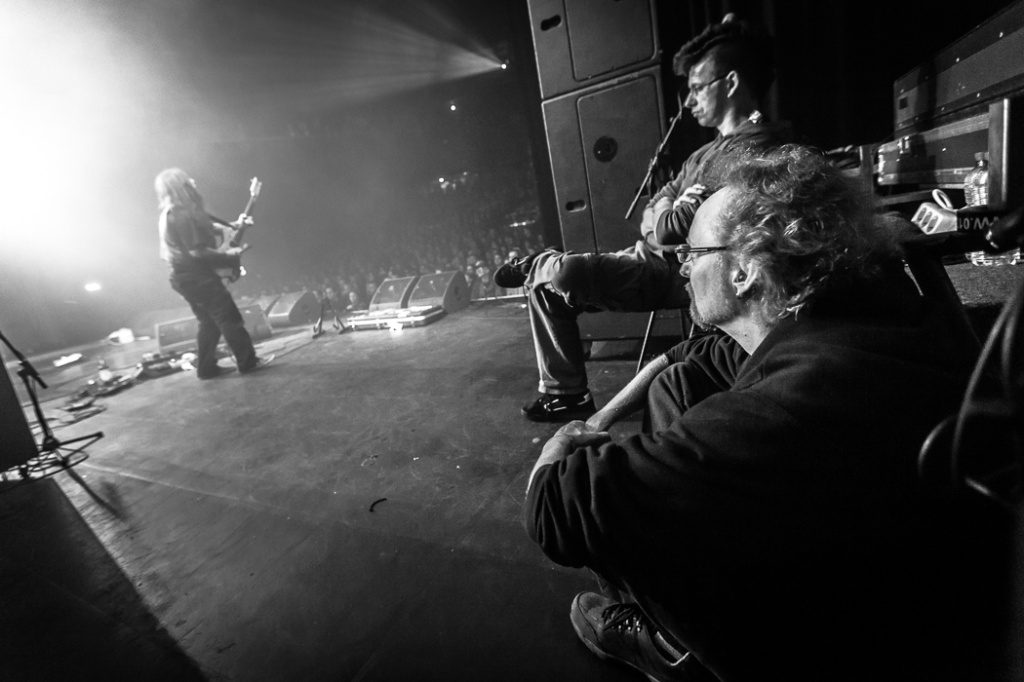
Nog geen reacties!
Er zijn nog geen reacties geplaatst.